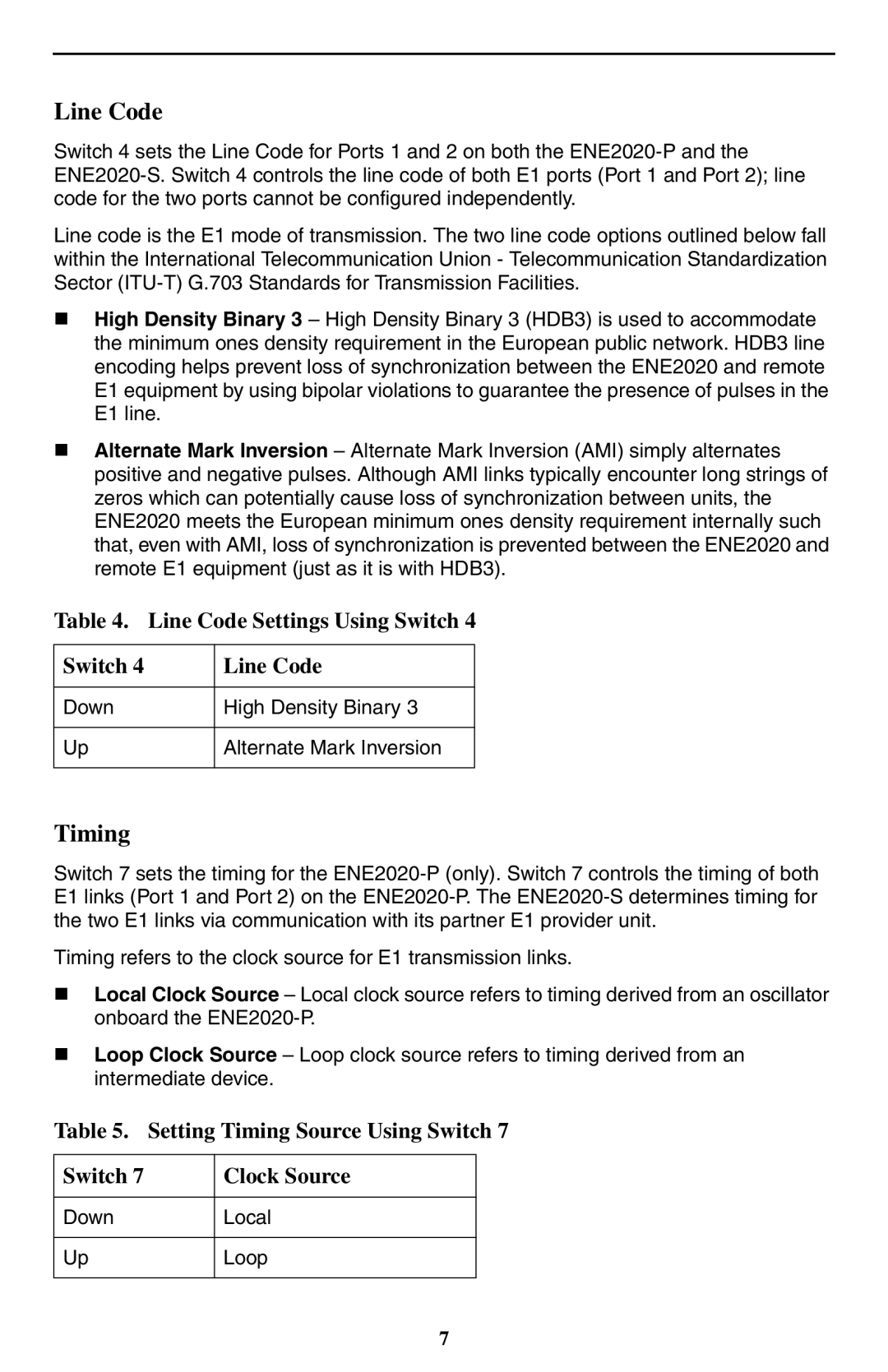Line Code
Switch 4 sets the Line Code for Ports 1 and 2 on both the
Line code is the E1 mode of transmission. The two line code options outlined below fall within the International Telecommunication Union - Telecommunication Standardization Sector
High Density Binary 3 – High Density Binary 3 (HDB3) is used to accommodate the minimum ones density requirement in the European public network. HDB3 line encoding helps prevent loss of synchronization between the ENE2020 and remote E1 equipment by using bipolar violations to guarantee the presence of pulses in the E1 line.
Alternate Mark Inversion – Alternate Mark Inversion (AMI) simply alternates positive and negative pulses. Although AMI links typically encounter long strings of zeros which can potentially cause loss of synchronization between units, the ENE2020 meets the European minimum ones density requirement internally such that, even with AMI, loss of synchronization is prevented between the ENE2020 and remote E1 equipment (just as it is with HDB3).
Table 4. Line Code Settings Using Switch 4
Switch 4 | Line Code |
|
|
Down | High Density Binary 3 |
|
|
Up | Alternate Mark Inversion |
|
|
Timing
Switch 7 sets the timing for the
Timing refers to the clock source for E1 transmission links.
Local Clock Source – Local clock source refers to timing derived from an oscillator onboard the
Loop Clock Source – Loop clock source refers to timing derived from an intermediate device.
Table 5. Setting Timing Source Using Switch 7
Switch 7 | Clock Source |
|
|
Down | Local |
|
|
Up | Loop |
|
|
7
